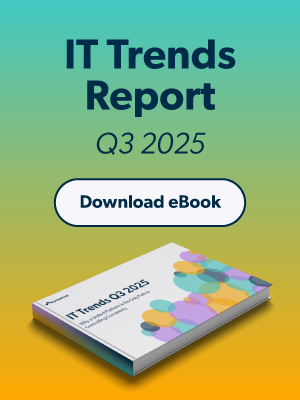Updated on February 14, 2025
Cyber threats are evolving—and so must our methods for mitigating them. For IT professionals and security analysts, understanding the principle of least privilege access control (LPAC) can make all the difference in minimizing attack surfaces, meeting compliance needs, and securing enterprise environments.
This article will explore what least privilege access control is, why it matters, its key features, challenges, benefits, and how you can implement it in your organization.
What is Least Privilege Access Control?
The principle of least privilege (PoLP) is a fundamental cybersecurity concept that revolves around granting users, applications, or systems the bare minimum access necessary to perform their tasks.
Imagine allowing a junior HR employee access to scheduling software without granting permissions to sensitive payroll data—that’s least privilege access in action.
Least Privilege vs. Traditional Access Models
Unlike traditional access models, which often give too many permissions to avoid interruption in workflows, least privilege emphasizes granularity. It reduces “over-permissioning”, which can lead to insider threats or privilege escalation attacks, making it a preferred approach in modern cybersecurity strategies.
Compliance and LPAC
Least privilege aligns with regulations like GDPR, HIPAA, and industry best practices such as NIST frameworks. These guidelines often mandate limiting unnecessary access to sensitive data as part of compliance requirements.
Key Features of Least Privilege Access Control
Adopting LPAC isn’t just about restricting access—it’s about enabling intelligent, dynamic, and accountable access management.
Granular Access Control
Permissions are defined on a highly specific level, such as granting access to an individual database table or specific project files while denying access to broader systems.
Dynamic Permissions
Permissions adapt to roles and context, allowing for workflows to remain flexible while preserving security. For example, cloud environments often integrate role-based access control (RBAC) with dynamic privileges tailored to different projects.
Time-Bound Access
Users are granted temporary access specifically for time-bound tasks. For instance, an IT contractor troubleshooting a server issue might only get one-hour access. Time-boxed permissions reduce the risk if credentials are compromised.
Audit and Logging
Modern LPAC platforms emphasize accountability through audit trails. Identity and Access Management (IAM) tools log every user action to help track violations and meet compliance needs.
Benefits of Least Privilege Access Control
Implementing Least Privilege Access Control (LPAC) offers organizations enhanced security and operational efficiency. By limiting access to only what is essential, LPAC mitigates risks, ensures compliance, and streamlines user management.
Improved Security
By limiting access, LPAC minimizes the attack surface, reducing risks of insider threats, malware propagation, or breaches resulting from stolen credentials.
Compliance Assurance
Adopting LPAC doesn’t just proactively defend against breaches—it ensures organizations comply with regulations like PCI DSS, SOX, or GDPR, where over-access violates requirements.
Preventing Privilege Creep
Over time, employees may accumulate access as they move roles or take on new projects. With LPAC policies in place, regular audits and dynamic permissions prevent outdated access entitlements.
Damage Mitigation
If a breach does occur, LPAC compartmentalizes access, containing the threat and limiting the lateral movement of attackers.
Challenges in Implementing Least Privilege Access Control
While LPAC is effective, it does pose challenges for IT security teams.
Identifying Minimum Access Needs
Understanding the exact permissions employees need without disrupting workflows requires detailed analysis, which can be resource-intensive.
Scalability
Managing least privilege across large-scale enterprises or in cloud-native environments containing hundreds of services can be complex without automation.
User Resistance
Users may perceive LPAC as tedious or restrictive. Proactively involving employees in conversations about security benefits can help overcome this barrier.
Maintaining Changes Over Time
Employees change roles, projects evolve, and systems are updated. Staying true to the “least privilege” principle demands continuous refinement of access policies.
How to Implement Least Privilege Access Control
Successfully implementing LPAC requires a structured approach, complemented by the right tools. Follow these steps to get started:
Step 1: Assessment
Start by thoroughly evaluating your organization’s roles, responsibilities, and the specific levels of access each requires to perform their functions.
Create a detailed inventory of current permissions and identify any “over-permissioned” accounts or systems that could be vulnerable to “privilege creep,” where users accumulate unnecessary access over time. This initial step helps uncover potential security gaps and sets the foundation for implementing least privilege access effectively.
Step 2: Define Policies
Draft a comprehensive least privilege access policy tailored to your organization’s structure and operational needs. This policy should outline clear guidelines for granting, modifying, and revoking access permissions.
To simplify enforcement, adopt a combination of role-based access control (RBAC), which assigns permissions by job roles, and task-specific privileges, which grant temporary access for specific tasks. A well-defined policy ensures consistency and minimizes the risk of misconfigurations.
Step 3: Enforce Least Privilege
Leverage Identity and Access Management (IAM) tools such as JumpCloud to implement role-based and attribute-based access controls (ABAC) effectively. These tools provide granular control, ensuring users only have access to the systems and data they need.
Enhance security further by integrating mechanisms like multi-factor authentication (MFA) for an added layer of protection and zero trust network access (ZTNA), which verifies every request before granting access.
These measures work together to strengthen your Least Privilege Access Control (LPAC) approach.
Step 4: Regular Reviews
Establish a schedule for conducting regular audits of access permissions and policies. These reviews help you identify outdated permissions, over-provisioned accounts, or policies that no longer serve their purpose.
Use tools to generate comprehensive audit trails and enable real-time monitoring of access and activities. Regular reviews ensure your least privilege policies remain relevant over time, adapting to changes in your organization’s structure or operations.
Step 5: Automate and Scale
To ensure scalability without adding unnecessary overhead, implement automation wherever possible. Use dynamic policies that automatically adjust access permissions based on real-time activities, roles, or contextual factors such as location or device.
Advanced analytics-driven IAM platforms can help you monitor user behavior and detect anomalies, allowing you to scale your LPAC strategy efficiently while maintaining robust security. Automation not only saves time but also reduces the risk of human error in managing access permissions.
Real-World Examples of Least Privilege
Securing Admin Privileges
A large organization reduced admin rights by creating task-oriented administrative roles. This decreased the risk of privilege escalation by rogue insiders.
Cloud Compliance in Healthcare
Hospitals using cloud platforms implement LPAC to secure sensitive patient records, ensuring only authorized personnel can access HIPAA-protected datasets.
Mitigating Insider Threats in Finance
A financial institution leveraged LPAC to restrict tellers’ access to specific accounts and transactions, minimizing fraud risk while increasing compliance with SOX standards.
Adopting least privilege access control isn’t optional in today’s security landscape—it’s essential. Whether you’re operating in a heavily regulated industry, expanding your organization’s cloud footprint, or safeguarding sensitive systems against malware or insider threats, LPAC equips your organization with better control and resilience.
Frequently Asked Questions
What is the principle of least privilege (PoLP)?
The principle of least privilege ensures users and systems only have access to the data and resources necessary for their roles, minimizing unnecessary permissions.
How does least privilege access control enhance security?
It reduces the risk of unauthorized access, data breaches, and insider threats by limiting permissions to only what’s essential.
What challenges arise in implementing least privilege?
Challenges include accurately defining roles, managing permissions over time, and ensuring policies stay updated as organizational needs evolve.
What tools can be used to enforce least privilege access control?
Tools such as access management systems, privilege auditing software, and policy enforcement solutions can help manage and monitor permissions.
How does least privilege access control help with compliance?
It supports compliance by ensuring access policies align with regulatory requirements for data protection and security.





